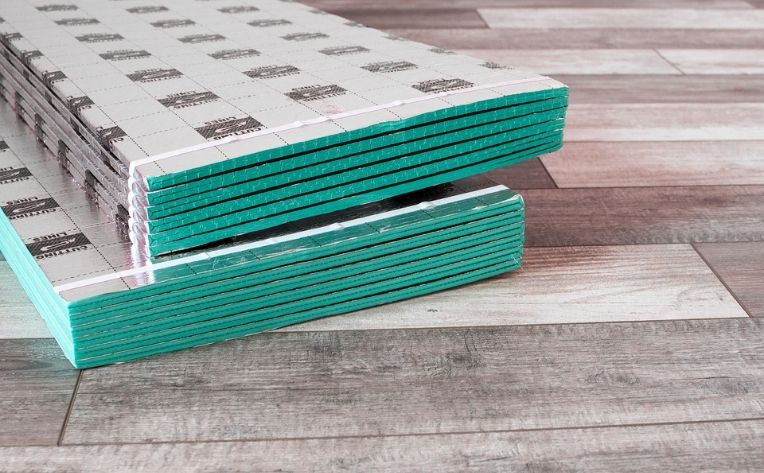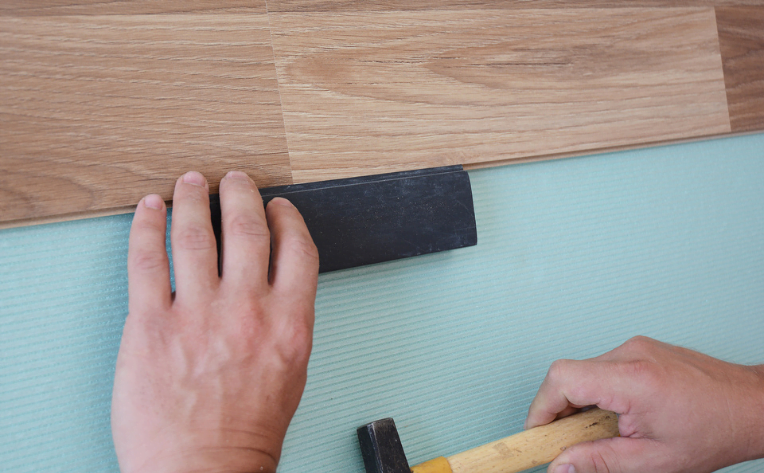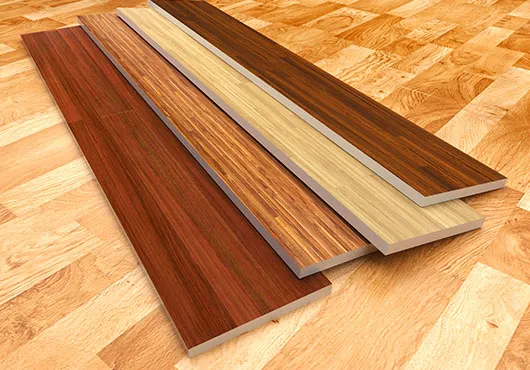Table of Contents
For a variety of floor coverings, floating flooring has grown increasingly popular. The term “floating floor” refers to a method of installation that can be employed with laminates, engineered hardwood, and luxury vinyl flooring. Individual planks (or, in some circumstances, tiles) are interlocked edge-to-edge to form a single mat-like surface that merely lays on the underlayment in this approach. It differs from the glue-down or nail-down procedures that are still used for ceramic and stone tiles and the methods that were once typical for nearly all flooring materials.
What Is a Floating Floor?
Floating floors are flooring installations in which the flooring material “floats” over the subfloor and underlayment.


Floating floor installation is a favored option for DIYers because of its convenience and simplicity. It saves money and speeds up the installation process. However, an excellent floating floor installation necessitates a well-prepared subfloor, and it might have a hollow feel underfoot that is less appealing than nailed-down hardwood or bonded ceramic tile.
How Does a Floating Floor Work?
Floating includes placing the fabric on top of the subfloor and attaching planks or tiles together. This is finished with most floating ground tongues with groove joints that lock the sides of the cloth together. Whether you actually set up a floating backside or name a professional, the meeting consists of the following


Start with a floor fabric that has a manufactured locking system. Consult ground professionals for recommendations on which flooring kind and style can work elegantly for your project.
Next, you can pick the kind of underlayment. Underlayment is a skinny sheet of foam or other fabric that act as a cushion among the flooring. Further advantages of underlayment consist of wetting the sound and casting off moisture accomplishing the subfloor.
Place the underlayment in the installation region and cut it so that the aspects of the wall are a few inches elevated.
Place the tongue plus groove floor one board at a time on top of the underlayment. Secure every part and fill the rows until you reach the stopping point.
Determine and cut the ultimate planks and restore them in place. As you set up, Mind Baseboards plus Door Threshold make certain the transitions are real and there are no visible gaps.
When the location is completely covered, you can trim the useless underlayment and revel in your new floor.
If you select to lie the floating flooring yourself, you can save cash on labor costs. However, due to easiness on a floated floor, there will possibly be smaller business labor costs than a common floor installation.
However, constantly make certain to observe the manufacturer’s instructions, if you install it manually. However, there are lots of types of floor substances you can select from if this setup suits your ground preferences well.
Which Type of Flooring Materials Can Be Floated?
The usage of materials with an interlocking design is a basic need for floating flooring. Carpet and sheet vinyl are excluded, but many other flooring options remain.
Although some floating flooring materials require glue for installation, there are several designs that do not require glue. The following are some attractive floating flooring materials:
Laminate


The laminate was one of the earliest materials utilized in floating installation. Laminate is a resilient flooring material that can be installed over a variety of subfloors.
A click-lock diagram secures laminate planks, creating a secure but flexible bond that can withstand a variety of obstacles.
Luxury Vinyl
A collection of plastics gives luxury vinyl the appearance of a timber panel while also providing moisture-breaking advantages. Luxury vinyl may glide on top of your subfloor and serve as a low-cost substitute for natural wood or tile thanks to its interlocking plank pattern.
Engineered hardwood
Finagled wood, unlike herbal hardwood, is created with layers of wooden adhesive mixed with temperature and pressure. The operational material is durable and moisture and humidity resistant.
Engineered hardwood allows you to work in the beauty of the wood while also allowing for a quick setup. Made using a tongue groove tongue and groove format that allows for floating installation.
The confluence and strips will be glued in place for setup, but there will be no locking device to keep the ground from breaking apart.
Some engineered floors can be created using a click-on lock type installation, often known as sink and fold flooring, to help protect your flooring.
Certain Tiles
Each piece of a traditional tile installation tool must be completely covered in mortar and grout. Floating tiles are a good option because this method requires a lot of expertise and time.
Floating tiles have a rubber base and tongue–and–groove interlocking system. Although grout is still required, the interlocking system creates similar operating zones.
Maintenance and Repair
The way in which a floating floor material is cleaned and maintained is governed by the type of material. For example, cleaning for laminate and luxury vinyl is generally just a matter of damp-mopping, while with engineered hardwood, you should avoid the use of water. Replacement of damaged planks or boards is typically much easier for floating floors than for glue-down or nail-down flooring since it is possible to disassemble the floating planks and replace the damaged boards.
Comfort and Convenience
Floating floors, especially laminates, tend to feel hollow and loud underfoot since the materials just lay on the substrate and are rather thin. The use of a high-quality foam underlayment can help to mitigate this issue.
Pros of Floating Floors
- Inexpensive
- Easy to replace damaged planks
- Easy DIY installation
Cons of Floating Floors
- May lower real estate value
- Can feel hollow and loud underfoot
- Cannot be refinished
FAQ’s
Is a Floating Floor Right for You?
A floating floor can be a good choice if you are a DIYer, or if you are on a budget. These products are typically less expensive and easier to install than comparable glue-down or nail-down flooring. While some floating floors are regarded as cheap in appearance and performance, luxury vinyl is actually a fairly premium material that won’t compromise real estate value.
Which type of Flooring Materials Can Be Floated?
– Laminated
– Wood
– Luxury Vinyl